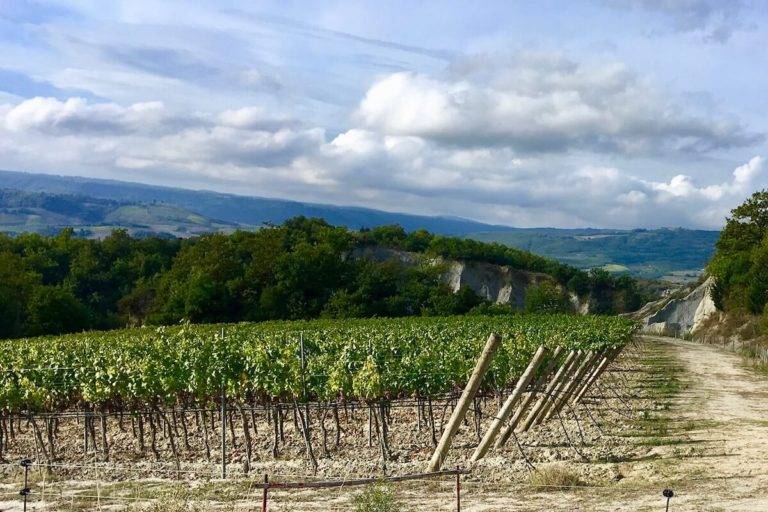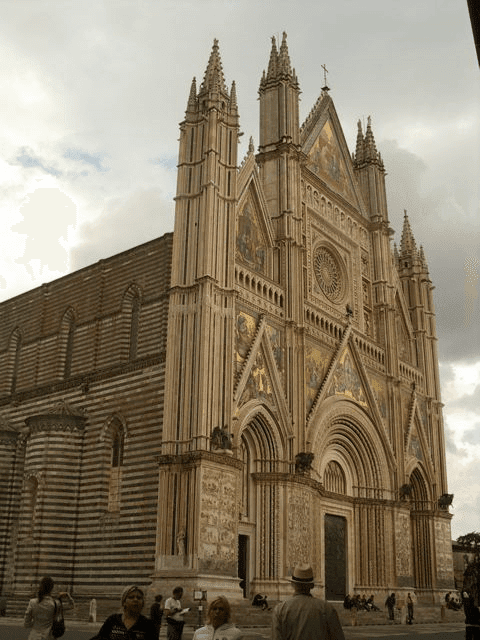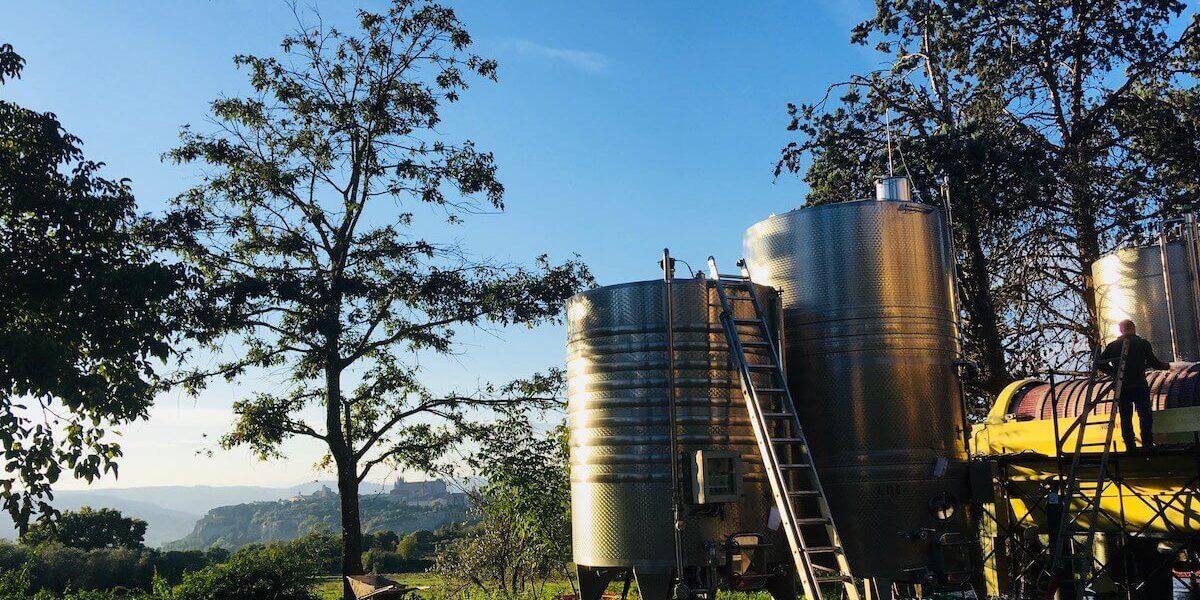BY TANYA MORNING STAR DARLING
Umbria is one of the most picturesque areas in all of Central Italy: the forests, the waterways, the winding roads, and the ancient Etruscan hilltop town of Orvieto, with its myriad of underground caves and magnificent basilica. It is also home to one of the greatest white wines of Italy: Orvieto DOC.
Evidence of the greatness of Orvieto wine is abundant throughout the ages, and yet there is a clear disconnect between the qualities of Orvieto wines vs. the way they are perceived in the world, generally, as simply thirst-quenching.
As a wine scholar and historian, who has family nearby, I have fallen in love over the years with Orvieto and its wines. In 2018, my curiosity led me to embark on one of the most comprehensive inquiries into Orvieto wines ever undertaken. Over a week of very long (and wonderful) days, I visited virtually every estate, every cooperative producer, and tasted every single wine produced under the Orvieto DOC (as well as many white, red, and sparkling non-DOC wines made within the zone). I met with scholars and historians and pondered Alessandro Masnaghetti’s terroir map as I drove the serpentine roads, walked the vineyards, and explored the ancient wine caves. I came away from the experience more deeply in love with Orvieto wines than before and with a strong desire to share their greatness with the world.
From at least 1,000 BCE, the Etruscans made wine in Orvieto, long before the Greeks landed on the Italic peninsula in the 8th century BCE, calling it “Oenotria” (the land of the staked vine). Throughout the Middle Ages, the wines of Orvieto were praised and prized by nobility and clergy, so much that the architect who built the Duomo in the 13th century was famously paid (largely) in wine. Fascinatingly, we have documentation of the wines being made in roughly their contemporary style for centuries, commanding higher prices than Barolo up to the 20th century! Not only that, but the terroir, town, and cultural history of Orvieto are among the most enchanting in all of Italy. So, how can it be that the quality and intrigue of these wines continue to fly under the radar?
It’s complicated, but the economics of Italy’s agricultural practice of mezzandria—basically sharecropping, which had been abandoned centuries earlier in other parts of Europe — was the law of the land throughout Italy until it was officially outlawed in the 1960’s (not coincidentally, at the same time Italy’s DOC system was born). The farming practice of mezzandria historically drove growers to value quantity over quality, which inhibited many of Italy’s greatest regions from realizing their potential for hundreds of years, until quite contemporary times. The economic legacy of mezzandria has many Italian wine regions still struggling to catch up, realize their potential or capture the attention of the world.
One of the results of this major shift in land ownership in Italy in the 1960s was the rise of cooperatives and an explosion of independent estate producers. Both of these things were happening in Orvieto in the mid 20th century, but in 1970s, Tuscan wine firms seeking a white wine for their portfolio began to look to Orvieto, a wine with a rich historical reputation and considerable name recognition.
From the 1980s, firms have purchased fruit from cooperatives and bottled it under their own labels, releasing large quantities of refreshing, easy-drinking wine at fair prices. These powerful Tuscan firms made Orvieto the go-to glass pour for Italian restaurants across the United States. Very few Americans have any idea of the terroir treasures Orvieto has to offer. The recognition that Orvieto has enjoyed as a result of wide distribution is a double-edged sword for the region. However, beyond wines of thirst, Orvieto produces a profusion of exquisite wines in a variety of styles from nuanced terroirs. And for me, there is no doubt, that there has ever been a better time to discover the pleasures the region has to offer.
So what makes Orvieto wine so special? The land, the grapes, and the people. The DOC is an inter-regional DOC spanning Umbria and Lazio in Central Italy. It produces only white wine (ranging from dry to lusciously sweet), from at least 60 percent Grechetto and Procanico, a high-quality local biotype of Trebbiano Toscano. The territory is diverse with unique terroirs, including volcanic, marine sedimentary clay, and sandy soils.

It might surprise readers to learn that this land-locked region is highly influenced by water. Two large lakes flank the Orvieto zone: the ancient volcanic Bolsena (actually in Eastern Lazio), and the man-made lake Corbara, which dams the Tevere river in the eastern part of the region. Additionally, the mighty Tevere and its tributary, the Paglia, also flow through the zone making Orvieto one of the only places in Italy which is significantly and consistently affected by Botrytis Cinerea (aka Noble Rot). In fact, Orvieto is the only DOC to regulate wines made from botrytis-affected grapes.
In light of these factors, it is not surprising that the wines are very nuanced in style and structure; depending on soil, proximity to bodies of water, and exposure. The wines range from ethereal to deeply grounded, dry to sweet, and everything in between. There is more than enough nuance in the wines to keep both the mind and the senses interested, putting Orvieto wines, in my opinion, in league with the greatest white wines of the world.
The whole energy of the zone is magical, from the Etruscans, Roman, and Catholic heritage to the enchantingly diverse landscape. But it is the people and their wines which endear Orvieto to my heart. Small producers preserve the ancient grapes and winemaking traditions but are not stagnated by the past. Newer cooperatives focus on both quality and tradition. Here, innovation and tradition are friends.
The culture of the people is really what makes Orvieto’s wines so exciting. Historically rooted but also quite maverick, Orvieto wines do not fail to surprise and delight if you accept the invitation to explore.








